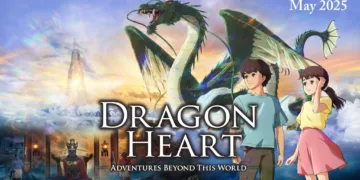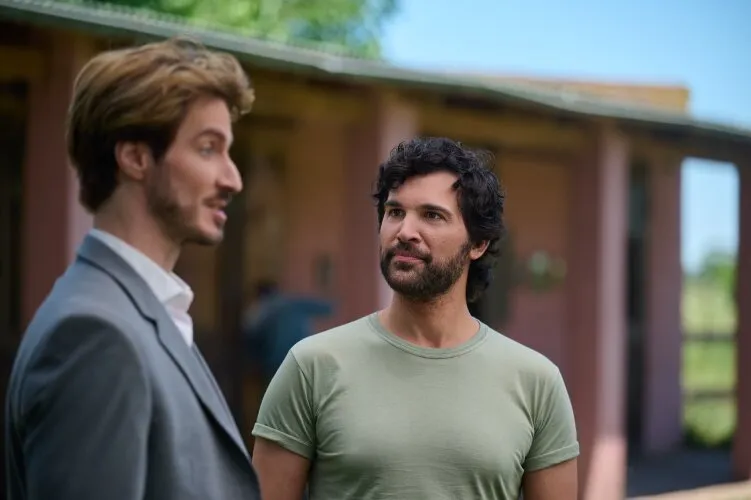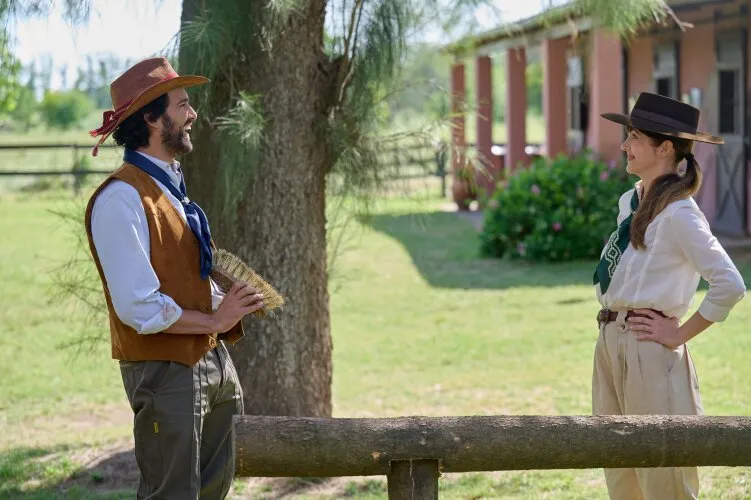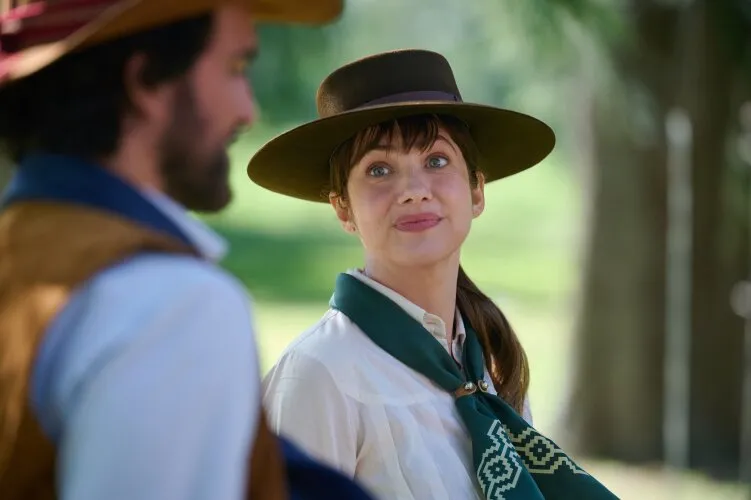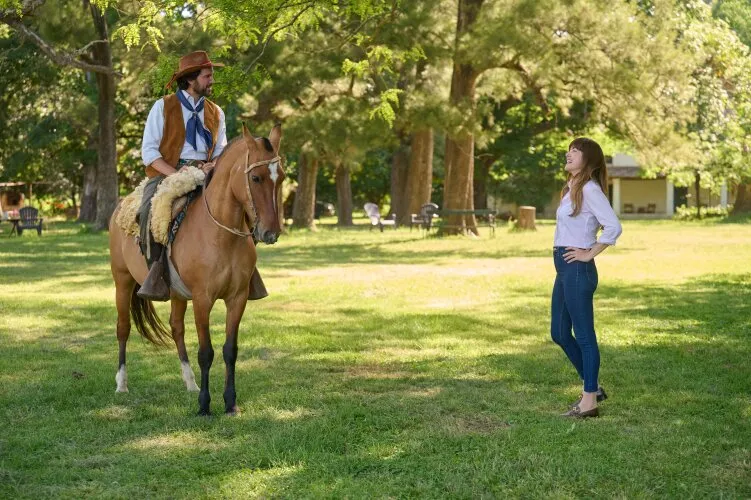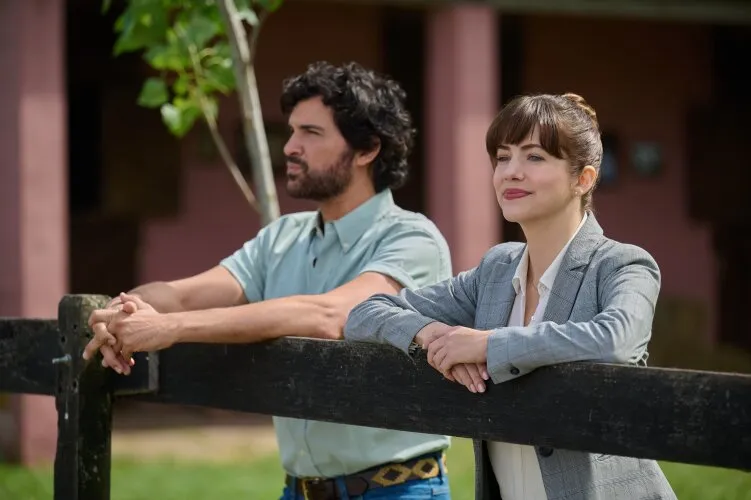“My Argentine Heart” explores a love story set against an Argentine backdrop. The narrative centers on Abril, a Boston business consultant, and Diego, connected to gaucho traditions. Their relationship reveals tensions between city life and rural roots.
The film uses Argentine landscapes strategically. Scenes featuring the Pampas and Iguazu Falls create a rich visual context that supports the characters’ emotional journey.
The central romance follows expected paths, with Abril and Diego navigating personal differences. A secondary storyline involving Belinda and Antonio provides additional texture to the narrative, offering glimpses into familial connections and cultural dynamics.
The script captures nuanced interactions between characters, highlighting cultural contrasts without relying on stereotypical representations. While the plot follows familiar romantic structures, the Argentine setting lends a distinctive atmosphere to the storytelling.
Plot Synopsis: A Journey of Roots, Redemption, and Romance
Abril Torres, a Boston-based business consultant, returns to her family’s ranch in Argentina after a career-derailing mistake. She seeks redemption and a fresh start in the place where she spent childhood summers. Her cousin Belinda, tired from managing the ranch alone, wants to sell it and open a restaurant. Abril sees the ranch as more than property—it represents her heritage and a chance to rebuild her life.
Diego, her childhood sweetheart turned ex, now works as a ranch caretaker. He dreams of preserving the ranch as an authentic gaucho experience and wants to purchase the property. This directly conflicts with Abril’s desire to keep the ranch in family hands.
An old, forgotten loan creates a financial crisis threatening to take the ranch from both Abril and Diego. They reluctantly partner to save the land, which brings their unresolved feelings to the surface.
Their romantic tension carries weight, complicated by past pain and different visions for the ranch’s future. Abril questions her identity—a Boston consultant or an Argentine rancher. Diego similarly explores his path after leaving a finance career to reconnect with his cultural roots.
Abril uses her professional skills to resolve the financial crisis and find personal clarity. Her journey culminates at the Iguazu Falls, where she reconnects with Diego and her heritage, finding love and purpose in her family’s legacy.
Characters and Performances: Anchoring the Heart of My Argentine Heart
Julie Gonzalo portrays Abril Torres in “My Argentine Heart,” delivering a performance that explores a woman’s struggle after her career’s collapse. Abril represents the tension between professional aspirations and personal identity. Gonzalo crafts a character with genuine emotional depth—her portrayal feels raw and sincere, inviting viewers to connect with her personal journey.
Juan Pablo Di Pace plays Diego, the ranch’s dedicated caretaker who embodies traditional gaucho values. Di Pace brings warmth to his role, especially when depicting Diego’s connection to cultural roots. His character transcends typical romantic leads by weaving cultural pride with a quest for meaningful relationships. The interaction between Gonzalo and Di Pace feels natural, though their connection occasionally reads more as friendship than romance. This subtle dynamic introduces narrative complexity that distinguishes the film from standard romantic storytelling.
Supporting characters enrich the narrative’s texture. Belinda, Abril’s cousin and ranch co-owner, drives the story while representing personal dream pursuit. Valentina Frione infuses Belinda with nuanced emotional layers, balancing pragmatism and personal aspirations.
Antonio, portrayed by Eliseo Barrionuevo, offers a subdued counterpoint as a measured lawyer and secondary romantic interest. His quiet presence complements Belinda’s storyline, though their relationship feels peripheral. Tomas emerges as a plot mechanism threatening the ranch, yet lacks substantial character development.
The cast’s genuine connection to the material stands out. Gonzalo and Di Pace, both Argentine natives, bring credibility to their performances, particularly in culturally significant moments. Di Pace especially radiates confidence, making his portrayal feel effortless. Local actors populate the supporting roles, lending authentic texture to the storytelling.
The ensemble’s chemistry and cultural authenticity elevate “My Argentine Heart” beyond typical romantic narratives, grounding the characters within a meaningful exploration of personal and cultural identity.
Themes and Symbolism: Exploring Identity Through Roots and Renewal
The story of My Argentine Heart centers on second chances, exploring personal and professional redemption. Abril’s path as a business consultant rebuilding her career unfolds with subtle depth, portrayed by Julie Gonzalo. Her time at the ranch allows her to reevaluate her life and goals.
Diego’s narrative parallels this journey, as he returns to his family’s ranching roots after leaving a finance career in Mexico City. Their experiences reveal the struggle to align ambition with genuine self-expression.
The Torres family ranch represents more than a location. It symbolizes cultural roots and family connections. The film contrasts Abril’s urban background with the rhythmic, tradition-rich environment of rural Argentina. Gaucho culture provides a rich context, highlighting the tension between global lifestyles and local heritage. Diego’s commitment to preserving the ranch’s legacy speaks to the significance of maintaining community stories.
Abril and Diego’s relationship explores forgiveness and reconnection. Their interactions reveal a nuanced history of unresolved emotions. The film carefully develops their connection, allowing their individual growth to shape their interactions. Their final scene near Iguazu Falls captures a moment of emotional resolution, representing healing across personal and familial dimensions.
These intertwined stories examine the complex relationship between individual identity and cultural traditions.
Setting and Atmosphere: A Tale Grounded in Scenic Authenticity
A romantic drama that seamlessly weaves its setting into the narrative, My Argentine Heart breathes life into its landscape. The film captures Argentina’s essence through vivid scenes ranging from expansive family ranches to Buenos Aires’s vibrant streets. Ranch sequences—with dusty paths, grazing horses, and wooden tables filled with asado—evoke deep cultural roots.
Iconic locations like Casa Rosada and Iguazu Falls provide visual grandeur, creating a world both intimate and sweeping. Cultural nuances emerge through subtle moments: characters sharing mate during conversations, experiencing communal meals rich with Argentine flavors and familial connection.
Visual storytelling distinguishes the film, contrasting Abril’s structured Boston life with the relaxed ranch environment. Cinematography transforms rural scenes through warm, golden tones that suggest nostalgia, while Boston appears in cool, muted colors signaling emotional distance.
The interplay between different worlds crafts a narrative where landscape transcends mere background, instead reflecting characters’ inner emotional terrain. This approach elevates the story, suggesting deeper connections between people and their environments.
Romance and Relationships: Layers of Love and Reconciliation
The romantic journey between Abril and Diego in My Argentine Heart explores unspoken memories, rendering their partnership feel genuine. Their shared history of young love permeates their interactions, creating an underlying tension that propels the narrative.
Diego’s commitment to cultural preservation contrasts with Abril’s initial pursuit of professional identity, creating personal and cultural tensions. Their differences ultimately enrich their connection, as both characters transform and find mutual understanding. Their story quietly explores generational negotiations between ambition and heritage.
Abril and Diego anchor the film’s emotional landscape, while Belinda and Antonio’s romance offers a softer counterpoint. Antonio’s calm demeanor supports Belinda’s passionate quest to launch her restaurant, presenting a nuanced relationship dynamic. Their storyline provides quieter depth, reinforcing themes of partnership and personal development.
The connection between Abril and her cousin Belinda emerges as a subtle yet significant relationship. Their shared ranch memories add emotional complexity, especially as Belinda’s intention to sell challenges Abril’s sense of belonging. Their interaction reveals family dynamics—marked by conflict yet rooted in deep affection—and weaves together romantic and cultural elements.
These interconnected relationships transform My Argentine Heart from a standard romantic narrative into a rich exploration of human connections.
Final Verdict: A Heartfelt Escape with a Cultural Twist
“My Argentine Heart” offers a comforting romantic experience with subtle cultural nuances. The film explores romantic storytelling through an Argentinian lens, presenting characters navigating personal connections against a vibrant backdrop. Scenic landscapes and character interactions create an inviting narrative that gently explores heritage and personal transformation.
Viewers seeking gentle storytelling will appreciate the film’s warm approach to relationships. The story respectfully portrays characters’ emotional journeys while highlighting cultural elements without overwhelming the central romance. Characters feel genuine, moving through familiar emotional terrain with subtle complexity.
Audiences drawn to international stories with heartfelt themes will find this film appealing. Its portrayal of Argentinian settings and interpersonal dynamics provides an engaging viewing experience that transcends typical romantic storytelling.
The Review
My Argentine Heart
The film presents a heartwarming journey through Argentine culture, showcasing intimate portrayals of personal connections against stunning visual backdrops. Its storytelling weaves personal dynamics with regional insights, creating an engaging romantic experience. Stellar acting elevates the screenplay, bringing depth to characters navigating familial expectations and personal dreams. Despite occasional narrative limitations, the movie captures an endearing exploration of love and identity through a warm, inviting lens.
PROS
- Authentic Argentinian setting and cultural representation.
- Strong performances by Julie Gonzalo and Juan Pablo Di Pace.
- Engaging exploration of family bonds and personal redemption.
CONS
- Predictable and formulaic plot typical of Hallmark films.
- Underdeveloped antagonistic characters and external conflicts.
- Chemistry between leads is occasionally more friendly than romantic.

























